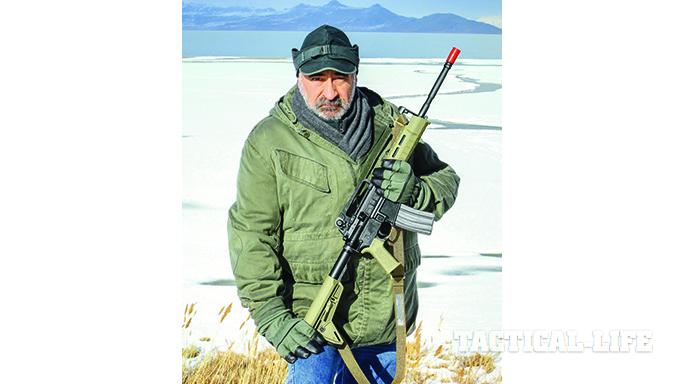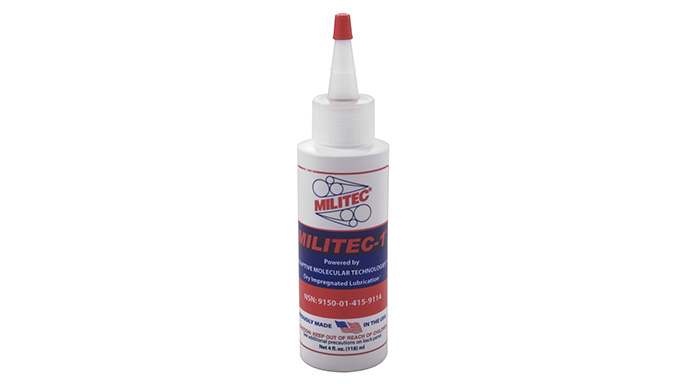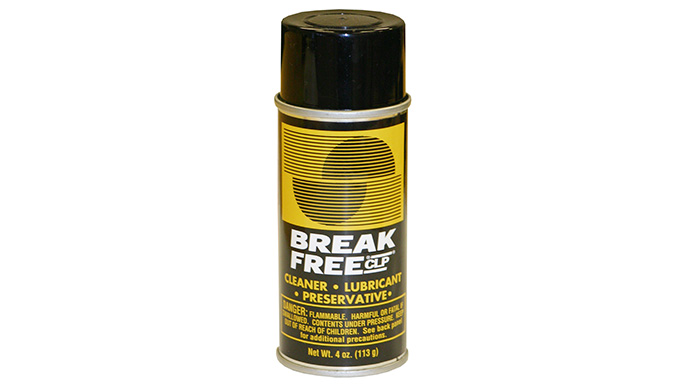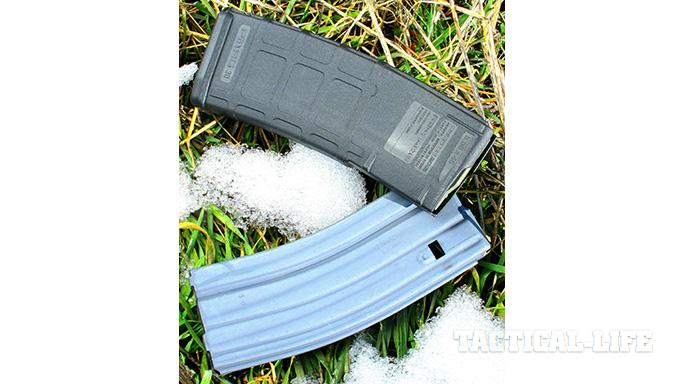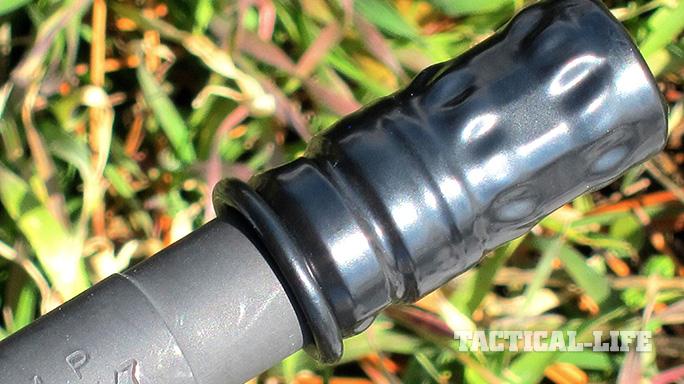Always controversial, in recent years we’ve seen more than a few references to the M16’s ability to handle hot climates and dusty environments, and, by extension, its cousin, the AR-15. Considering the battlefield’s gone from the jungles of Vietnam, which generated controversy on how well the platform held up to heat and rain, to the deserts of the Middle East, where the discussions now center around heat and fine sand particles, this isn’t surprising.
During the various wars and skirmishes the M16’s dealt with over the past 50 or so years, the humidity level has varied, but heat seems to be a fairly constant factor. Hot environments are relatively easy to keep the guns running in when it comes to lubes, accessories and gear. Environmental heat itself isn’t a major factor as long as it’s not too scorching for the rifle’s operator to function.
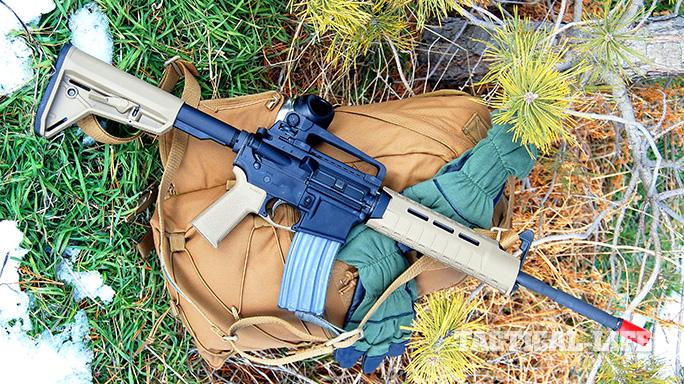
But what about sub-zero temperatures? In past scuffles, the bolt-action M1903 Springfield wasn’t complicated to maintain in the frozen trenches of World War I, but the M1 Garand clearly demonstrated in the frigid mountains of Korea that any semi-auto rifle action, no matter how good, is likely to get balky in the field as the temperature drops—and balky can quickly morph into what’s technically referred to as a frozen club. As semi- and full-auto battle rifles became the norm, the military had to look for various lubes for cold-weather operations, and by the time I was carrying an M16 for a living in the 1970s, we had LAW in our inventories to replace the more commonly used LSA for severe cold applications.
Advertisement — Continue Reading Below
While the majority of us civilians today don’t need to trundle up Mount Everest with an AR-15, the fact remains that not all of us live in Florida, and some of us actually do work or hunt in climates that can easily drop into single-digit temperatures on either side of zero during certain seasons. That’s why it’s important to remember that what’s good for the gun at 75 degrees above zero isn’t necessarily what’s good for the gun at 35 degrees below zero. You have to make concessions in how you yourself function in temperatures that low, and the same goes for your gun.
Smooth Shooter
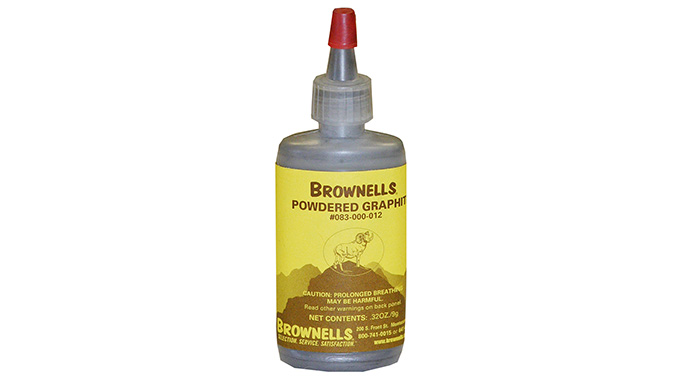
One of the primary changes in transitioning your summer AR into winter conditions is the lube you use. Conventional warm-weather lubes tend to thicken and gum up in colder air, which can slow the gun’s action down or even stop it entirely. Worst-case scenarios include a tarry mix of cold lube and burned powder carbon inside your direct-impingement AR’s action that can take you completely out of the game until you get back home to a warm spot in front of the fire to leisurely de-gunk the mess.
Advertisement — Continue Reading Below
One traditional solution is running with no lube whatsoever. I prefer at least some form of friction-reducer, and the trick here is finding one that’ll stay in place where it’s needed on moving contact surfaces without gluing everything together.
- RELATED STORY: AR Rifles & Pistols – 20 New Models On The Block
The driest I’d go is powdered graphite, applied where needed, after all of the other wet lube is removed. Powdered graphite mixed with most regular lubes can make a fine, gooey sludge, and you don’t want that in your gun.
Brownells carries a large variety of AR support gear under one roof, including Brownells Powdered Graphite, Militec in various sizes, Break-Free CLP in liquid or aerosol containers and Slip 2000 liquid, all of which are among the best cold-weather lube solutions available. Choose one, clean all the old fair-weather lube out of your rifle, replace it and you’re set for your next Arctic expedition.
Advertisement — Continue Reading Below
Sub-Zero Furniture
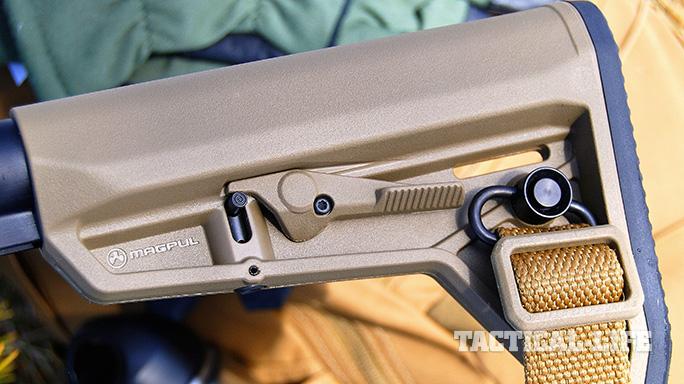
Polymers, plastics and other non-metallic stock components can be affected in odd ways by very low temperatures. The most common effect is brittleness, and most current makers use quality materials capable of holding their strength well below freezing. If, though, you plan to be out dog-sledding the Iditarod with your AR at -40 degrees, consider what might be attached to it.
In a wide field of AR furniture options, Magpul’s MOE forend, triggerguard and stock, like those shown on this particular gun, make good extreme cold candidates. This forend is comparatively thin in diameter, which is good for use with thick gloves but still has internal aluminum heat shields.
Advertisement — Continue Reading Below
The enlarged, polymer MOE triggerguard is also very amenable to gloved fingers, and the Magpul stock features a socket for a quick-detach, push-button rear sling swivel in case it’s necessary to de-sling yourself in a hurry. This Colt also came with a Magpul MBUS flip-up rear sight paired with the standard A2-style front sight tower. The MBUS is a very workable sight, particularly as a backup to an optic, but it’s made of injection-molded plastic, which in extreme conditions could snap off if inadvertently banged against a boulder, a tree or a charging walrus.
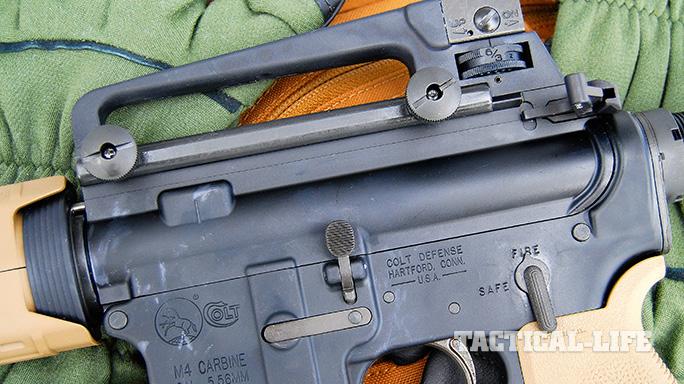
On this AR, I took no chances and replaced the rear sight with a detachable Colt carry handle that clamps on very securely, protects the dual apertures inside the top channel and stands up to far more hard use than a folding rear sight. Both Midway and Brownells catalog detachable carry handle/rear sights by various makers.
The forend also came with a detachable foregrip that presented the same situation as the rear sight. I’m not knocking Magpul products at all—just noting it’s something else that can potentially get knocked off, depending on what it’s attached to, and for that reason I left it off in setting the carbine up for low-bulk carry. The same reasoning would apply to any other maker’s products. You just need to consider what you hang on your AR and how you hang it.
Advertisement — Continue Reading Below
Ultra-Reliable Gear
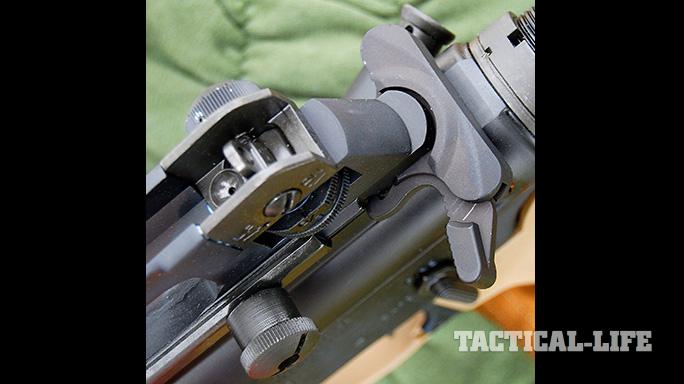
You’ve undoubtedly noticed the conspicuous absence of things like optics, red dots, lasers and lights on my AR. Any glass can fog and ice up with external condensation like rain and snow. Electronics that depend on batteries are always, regardless of battery type or quality, vulnerable to accelerated power drains that occur in very cold surroundings.
- RELATED STORY: 12 Gun Cleaners That Will Keep Your Firearm Running Smoothly
I don’t entirely trust electronic optics or other devices to remain functional in such circumstances, and for that reason this carbine reverts to Stone Age aiming technology that I consider dead-nuts reliable no matter how hot or cold it gets around me. Should I lose those iron sights, chances are I’ve lost the gun as well and the rest will be history—if I get home to tell it.
Advertisement — Continue Reading Below
In conjunction with the carry handle/rear sight’s two protruding, knurled, clamp-down knobs on the left side, I highly recommend getting a charging handle with a large latch for use with gloves. Bravo Company’s Gunfighter Mod 3 charging handle comes with a large latch that is stronger and extends much farther than the short Colt factory equivalent, and there’s less likelihood of the standard roll pin breaking under repeated stress or gorilla-hand use. Built with mil-spec materials, the entire replacement handle/latch assembly runs about $50 from Bravo Company, and on this carbine it makes a notable difference in operation.
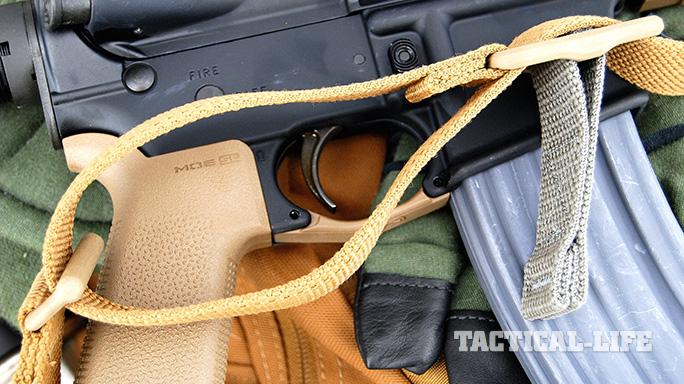
Slings on an AR are pretty much must-have items for rugged field use. In the woods, on snowshoes, a sled or a snowmobile, you need your hands free for other uses, and the AR-15 makes a very awkward boot gun. Slinging it puts it on your body so it goes where you go, and regardless of front or back carry, it’ll be more accessible than if it’s left stowed in a case somewhere.
The guiding principle here is simplicity. If you need to make quick adjustments in the middle of a raging blizzard with half-frozen fingers inside thick gloves, you do not want to be fumbling through a complicated, quadruple-under-woven, back-looped, overhung, reverse-buckled job that requires an instruction manual and a dozen Internet videos to master. As an example of this simplicity, the cotton-webbed Vickers sling from Blue Force Gear is a tough design that can be instantly adjusted by sliding a 3.25-inch tab up or down, even with shooting mittens on. The sling’s buckles are made of polymer that has been tested to serious frigidity levels without brittleness issues.
Advertisement — Continue Reading Below
Keep It Running
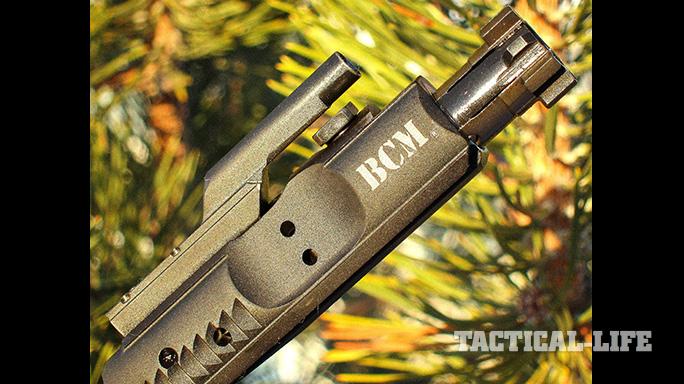
It is critical for any good AR to toss empty brass reliably. Mine all use Bravo Company’s Auto Bolt Carrier Group nowadays, and this cold-weather AR is no different. These units are built to premium standards and include mil-spec Carpenter 158 steel bolts, chrome-lined carriers and gas keys to resist moisture and condensation, Grade 8 hardened fasteners, properly staked and hardened gas keys, machined tool-steel extractors and ejectors with black extractor inserts, shot-peened bolt assemblies for extended life and beefed-up extractor springs for positive extraction in wet or dirty conditions, all without the necessity of using a Crane O-ring (although BCM still includes one with each unit).
- RELATED STORY: Getting a Grip – The Top 13 Tactical Gloves
Every carrier group is also high-pressure (HP) and magnetic-particle (MP) inspected to weed out flaws, and each one is test-fired before leaving the factory. If you have an older AR with a semi-auto carrier, this is also a good upgrade to replace it.
Advertisement — Continue Reading Below
Snow and rain in your bore can easily ruin a first shot (and your entire day) if you’re not aware your barrel’s packed with ice or beading up inside with water. The small 5.56mm-caliber tube reacts very poorly to even small obstructions, and those are easily avoided by either capping your flash suppressor with a hard plastic slip-on cover or a flexible, nitrile rubber AR-15 condom. Both are easy to take on and off, inexpensive and cheap enough to shoot through with zero negative effects on either the barrel or accuracy if there’s no time to remove them.
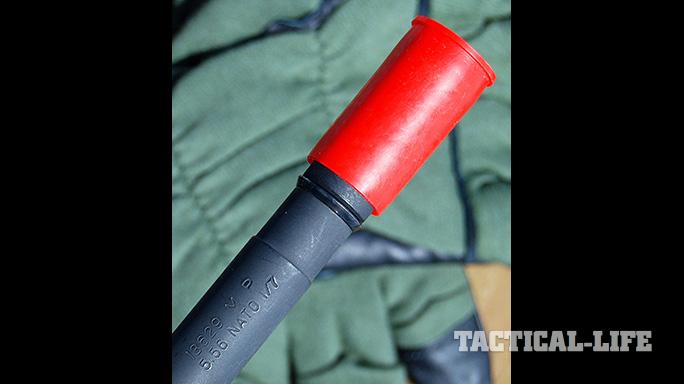
The plastic covers have been around for decades and are available in red or black (red’s easier to see and remind you to take it off), while the black, waterproof, reusable condoms are shipped 20 to a resealable pouch that fits easily in a pocket or pack. Both types are available from amazon.com. Be sure to remove whichever one you use from your muzzle when the gun goes back indoors or you’ll risk potential condensation and corrosion inside the barrel.
Magazines are the heart of any AR—go with good models, not cheap ones. The 30-round Magpul PMAG that came with this Colt M4 package has developed a good reputation, has been tested in low temperatures for proper functioning and drop-test durability and, despite being a form of plastic, holds up well in below-zero extremes as far as brittleness goes. If you prefer a lightweight aluminum, 30-round, GI-style mag, Brownells carries its own military contract brand. These can have their feed lips bent if dropped, but that’s the risk with any aluminum AR-15 magazine. Both options function well in cold extremes, and for the best odds of success, don’t lube their insides.
Regardless of brand, if your AR travels as a working gun in Yeti territory, treat it right and it can keep on chugging through some nasty conditions. You don’t have to leave it behind in favor of a bolt-action rifle merely because somebody on the Internet said it can’t function if the sun’s not out.
For More Information
Brownells
http://www.brownells.com; 800-741-0015
Blue Force Gear
http://www.blueforcegear.com; 877-430-2583
Bravo Company
http://www.bravocompanyusa.com; 877-272-8626
Magpul
http://www.magpul.com; 877-462-4785
This article was originally published in ‘Gun Annual’ #191. For information on how to subscribe, please email subscriptions@

